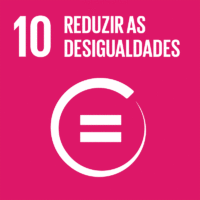Ciência_Iscte
Publicações
Descrição Detalhada da Publicação
Imagined and extended contact experiences and adolescent bystanders’ behavioral intentions in homophobic bullying episodes
Título Revista
Aggressive Behavior
Ano (publicação definitiva)
2023
Língua
Inglês
País
Estados Unidos da América
Mais Informação
Web of Science®
Scopus
Google Scholar
Esta publicação não está indexada no Overton
Abstract/Resumo
Bystanders’ helping interventions in bias-based bullying are rare, although they have the potential to intervene on behalf of the victim and quickly stop the aggression. Two studies tested, experimentally, the impact of adolescents' imagined (Study 1, N = 113, Mage = 16.17) and extended contact experiences (Study 2, N = 174, Mage =15.79) on assertive bystanders’ behavioral intentions in the context of homophobic bullying, an under- researched but highly detrimental behavior that emerges mainly during early adolescence (Espelage et al., 2018). Potential mediators (empathic concern, social contagion concerns, and masculinity/femininity threat) were also examined. Results showed that female younger participants revealed more behavioral intentions to help victims of homophobic bullying, when asked to imagine an interaction with an outgroup member (Study 1). Younger participants revealed less masculinity/femininity threat in the positive extended contact condition, and female participants revealed less empathic concern in the negative extended contact condition (Study 2). Overall, these findings identify specific conditions (e.g., younger female) where indirect contact interventions (i.e., extended and imagined) are likely to have a stronger impact. Age and sex differences found illustrate how adolescents vary in their behavioral intentions, empathic concern and threat; and also highlight the need to further examine age and sex differences regarding responses to homophobic bullying episodes.
Agradecimentos/Acknowledgements
--
Palavras-chave
Bystanders,Extended contact,Homophobic bullying,Imagined contact
Classificação Fields of Science and Technology
- Psicologia - Ciências Sociais
Registos de financiamentos
| Referência de financiamento | Entidade Financiadora |
|---|---|
| PD/BD/114000/2015 | Fundação para a Ciência e a Tecnologia |
Contribuições para os Objetivos do Desenvolvimento Sustentável das Nações Unidas
Com o objetivo de aumentar a investigação direcionada para o cumprimento dos Objetivos do Desenvolvimento Sustentável para 2030 das Nações Unidas, é disponibilizada no Ciência_Iscte a possibilidade de associação, quando aplicável, dos artigos científicos aos Objetivos do Desenvolvimento Sustentável. Estes são os Objetivos do Desenvolvimento Sustentável identificados pelo(s) autor(es) para esta publicação. Para uma informação detalhada dos Objetivos do Desenvolvimento Sustentável, clique aqui.

 English
English



